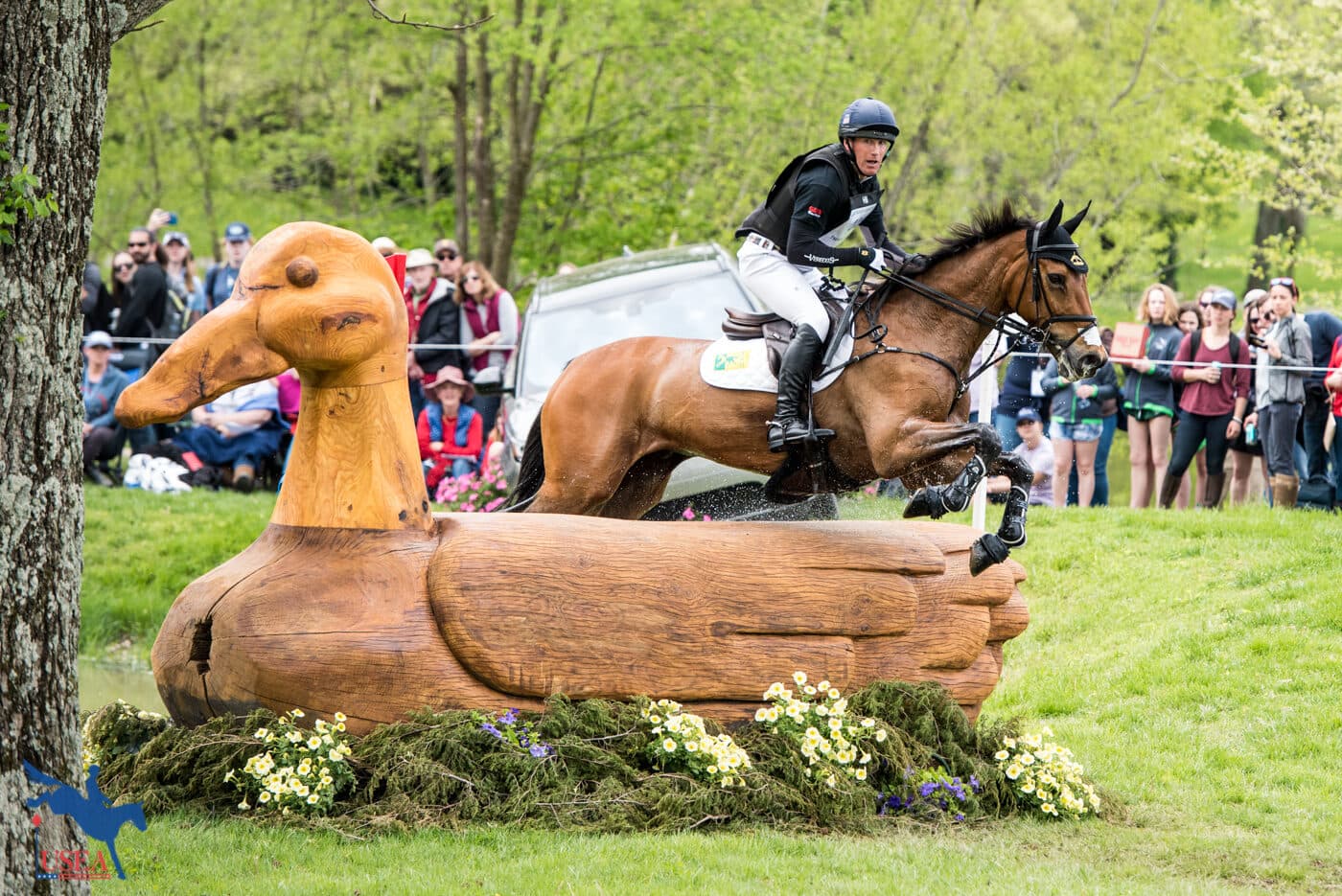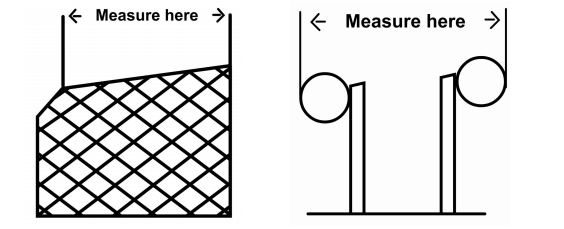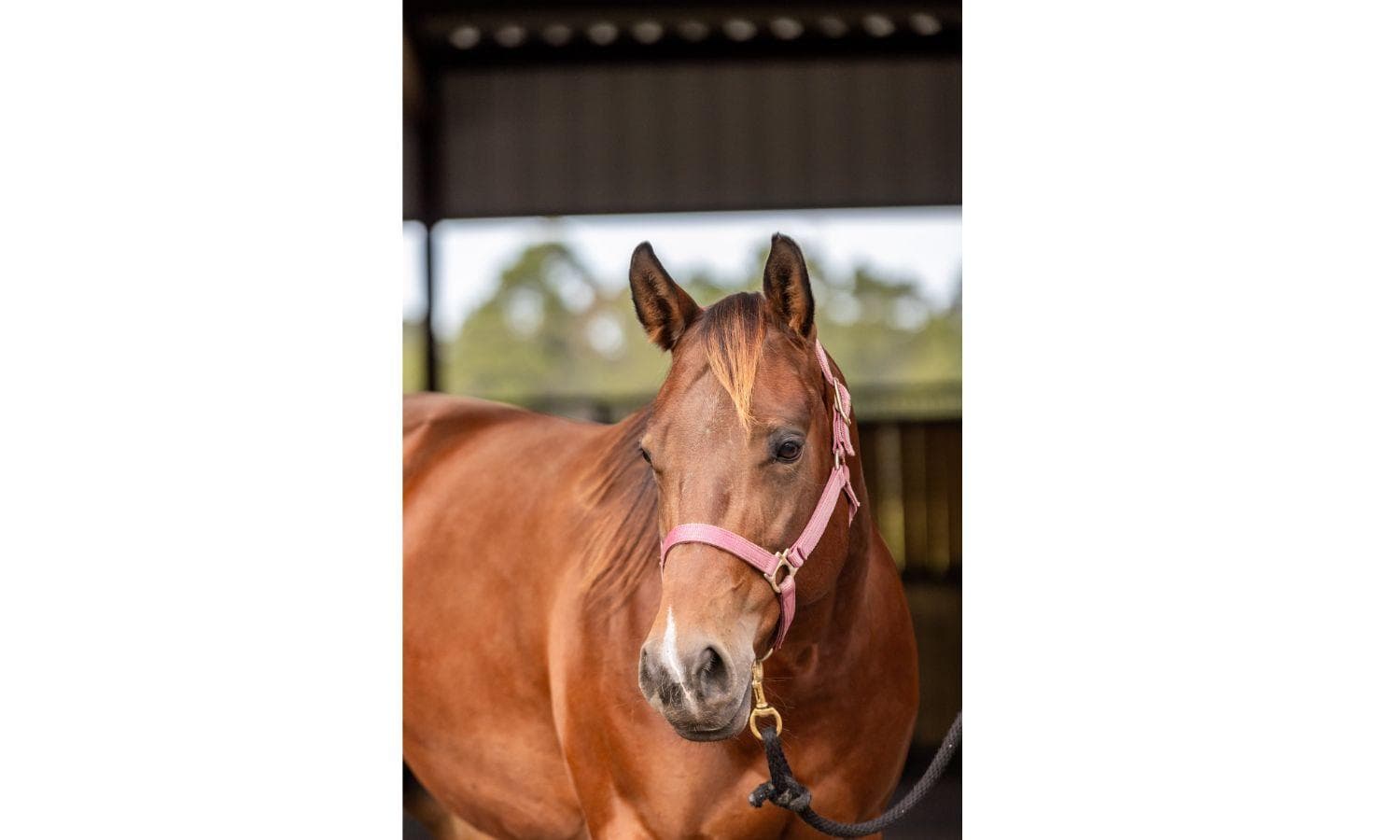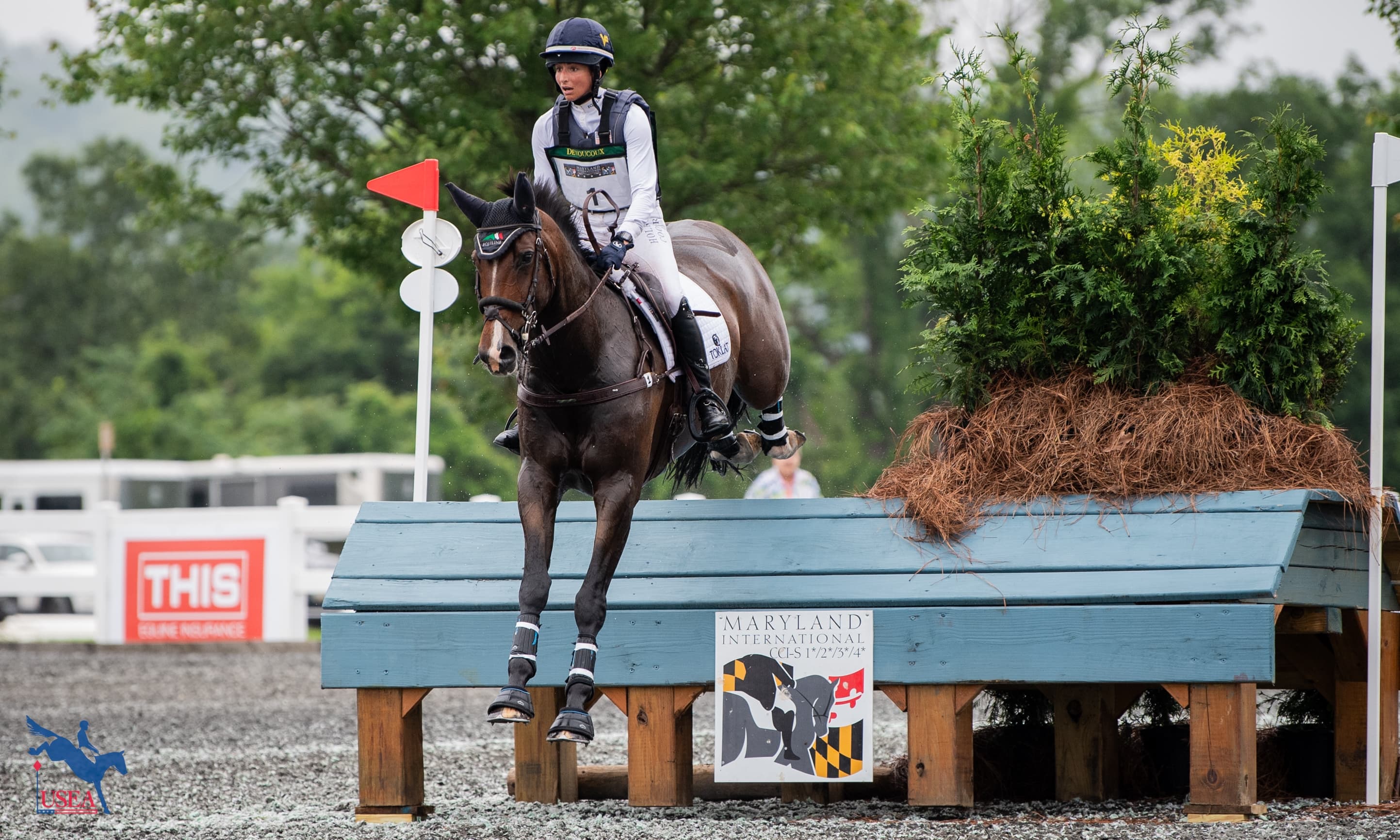Rule Refresher: Cross-Country Obstacles

There are many rules that dictate the cross-country obstacles, from the height of the roof above a fence to the types of flags that must be used on certain types of jumps. It is important to understand these rules so that, as a competitor, you can be aware of what is and is not permitted on the cross-country course.
Text has been taken directly from the USEF Rules for Eventing with emphasis added by the USEA.
EV139 Cross-Country Courses
1. MARKING OF THE COURSE.
a. Red or White Boundary Flags—These shall be used to mark the starting and finishing lines, to mark compulsory passages, and to define obstacles. They are placed in such a way that a competitor must leave a red flag on his right and a white flag on his left. In cases where courses for two or more levels of competition are marked at the same time, only those flags which form part of the course for the relevant competition are to be considered to be in effect at any one time.
b. Yellow Directional Markers - These shall be used to show the general direction to be taken and to help competitors find their way. Where necessary, they shall be superimposed with the first letter or color of the level. Passing close to them is not obligatory.
c. Numbers and Letters - Each obstacle shall be numbered. Obstacles with elements or options (see EV140.2) shall in addition be lettered (A, B, C, etc.). Each compulsory passage shall be marked with the first letter of the level and numbered consecutively. Numbers and letters shall be painted as follows: National Levels: Advanced—white on a blue background, Intermediate—white on a red background, Preliminary—white on a green background, Modified—orange on a blue background, Training—white on a black background, Novice—black on a white background, Beginner Novice—black on a yellow background or as designated by the organizer and printed on the course map. If an event is running FEI levels and National levels of the same height level, the National level must be differentiated from the FEI level(s).
d. Start and Finish Signs—In addition to the red and white boundary flags, the starting and finishing lines shall also be marked by distinct signs.
e. Stopping Points—These shall be marked by a peg painted in a vivid color, surveyor’s flags, or by a sign.
2. DISTANCES AND SPEEDS. The distances and the speeds demanded are determined by the intended difficulty of the whole Test. Within the limits shown in Appendix 2, Course Designers may choose the distances and speeds most suitable to the terrain and to the quality and standard of preparation of the competitors. The number of jumping efforts shall not exceed an average of 1 per every 100m commenced.
3. FINISHING LINES. The last obstacle on course shall be not less than 25 meters nor more than 75 meters from the finishing line.
4. PLAN OF THE COURSE.
a. Each competitor will be given in advance a plan showing the track of the course. The plan must be available by at least 3:00 p.m. of the day before the entire competition, but may be available sooner at the Organizing Committee’s discretion.
b. The plan must include the following: the position of the start and finish lines, the numbered compulsory passages, the numbered obstacles, the distance, the optimum time, the time limit.
5. SPECTATORS. Steps must be taken to ensure that no spectator or official shall be in such a position as to obstruct a competitor.
EV140 Cross-Country Obstacles
1. DEFINITION.
a. An obstacle is considered as such if and only if its extremities are marked with a red and white flag or flags and it is numbered. b. All significant jumping efforts that the average horse may be expected to attempt to negotiate must be defined as an obstacle or element and flagged, numbered and/or lettered accordingly.
2. OBSTACLES WITH ELEMENTS OR OPTIONS
a. Obstacles Composed of Several Elements. (See also Appendix 6)
1. If two or more jumping efforts, sited closely together, are designed as one integral test, they will be designated as “elements” of a single numbered obstacle. Each element will be marked with a different letter (A, B, C, etc.) and must be negotiated in the correct order. 2. Where two or more jumping efforts are sited so closely together that after a refusal, run out or fall, it would be unreasonably difficult to attempt to negotiate the second or subsequent effort without retaking one or more earlier efforts, these jumping efforts must be designated as one numbered obstacle and lettered accordingly.
b. Obstacle with Options or Alternatives.
c. Where an obstacle may be jumped in one effort but has options involving two or more efforts, each of these options must be lettered as an element.
d. Alternative obstacles or elements may be flagged separately and must be identified by the same number/letter as on the direct route. In this case, both sets of flags must be marked with a black line. Such “black flag” alternatives are to be judged as separate obstacles or elements, only one of which has to be jumped. A competitor is permitted to change without penalty from one black flagged line to another (e.g. jumping 6a left hand route then 6b right hand route) provided he has not presented his horse at the next element of the original line. (See diagrams App. 7).
3. NATURE OF OBSTACLES.
a. The obstacles must be fixed and imposing in shape and appearance. When natural obstacles are used, they should, if necessary, be reinforced so that they remain in the same state throughout the test. All reasonable precautions must be taken to prevent the possibility of a competitor being able to pass mounted under an obstacle. Portable fences must be secured to the ground in a way that the fence cannot move.
b. The cross-country obstacles at which a horse, in falling, is likely to be trapped or to injure itself, must be built in such a way that part of the obstacle can be quickly dismantled and can be quickly rebuilt exactly as before. Such a construction must not in any way detract from the solidity of the obstacle. Bullfinches must be constructed in such a way that the average horse will be encouraged to jump through it.
c. The use of motorized vehicles as the jumpable portion of an obstacle is forbidden.
4. Safety Flags
i. The types of fence required to use safety flags include:
a. Corners;
b. Fences of less than 3m (9’8”) jumpable width;
c. Related fences which because of their design offer a jumpable line of less than 3m (9’8”) width;
d. Fences designed to be jumped on an angle where knocking a flag is a possibility;
ii. The flags and poles on these fences must meet the following criteria;
a. The flag poles must be made of a material that cannot shatter, break or splinter, such as suitable plastic or carbon fiber or any other appropriate materials;
b. There must be no points anywhere on the flag poles and any sharp corners and/or edges on the flags must be rounded;
c. Flags must be secured in such a way that they ‘break away’ and/or move away from the fence if/when struck by either horse or rider in such a way that the chance of horse and/or rider being injured is significantly reduced.
d. All flags and flagpoles to be used in these situations will need to be approved by the Technical Delegate.
5. WATER CROSSINGS.
a. In all water crossings, the bottom should be firm and consistent. The maximum depth of the water shall not exceed 35 cm (14”).
b. Water at the Beginner Novice Level shall be a straightforward water crossing without obstacles. It shall be flagged at the entrance. The minimum width of water shall be 5.0 meters (16’5”). If it is necessary to revett the banks, the revetting shall not exceed 50 cm. (1’8”).
c. In all water crossings involving obstacles, the minimum distance between obstacles shall be 9 meters (29’3”). In all water-to-water obstacles, there shall be a minimum of 6 meters (19’6”) of water before the obstacle.
6. NUMBER OF JUMPING EFFORTS:
a. Within the limits shown in Appendix 2, the total number of jumping efforts shall be related to the length of the course.
b. To arrive at the number of jumping efforts, the efforts on the route expected to be taken by the average horse shall be totaled.
7. DIMENSIONS.
a. Within the limits shown in Appendix 2, the dimensions of obstacles should be related to the quality and standard of preparation of the competitors.
b. The fixed and solid part of an obstacle may not exceed the specified height at any of the points at which a competitor might reasonably attempt to negotiate the obstacle.
c. At obstacles with spread only (dry or water filled ditch), a guard rail or hedge in front that facilitates jumping is permitted. It may not exceed 50 cm (20 inches) in height. It must be included in the measurement of the spread.
d. Any roof, or other fixed and solid barrier over an obstacle, must not be less than 3.36 meters (11 feet) above the ground.
8. MEASUREMENTS.
a. The height of an obstacle is measured from the point where the average horse would take off. The spread of an open obstacle (e.g. Oxer or Ditch) is measured from the outside of the rails or other material making up the obstacle on the line on which the fence is intended to be jumped. The spread of a closed obstacle with a solid top (e.g. Tables) is measured from the highest point to the highest point on the line on which the fence is intended to be jumped.
b.

c. When the height of an obstacle cannot be clearly defined (natural hedge or brush fence), the height is measured to the fixed and solid part of the obstacle through which a horse cannot pass with impunity.
d. The drop on the landing side of an obstacle is measured from the highest part of the obstacle to the spot where the average horse would land.
9. FRANGIBLE FENCES
a. Obstacles for which frangible technology is appropriate shall be constructed using this technology, or shall be retrofitted using this technology. The Technical Delegate must communicate with the Ground Jury and Course Designer to confirm that the Frangible Technology employed is consistent with the USEA Cross-Country Obstacle Design Guidelines. Information on the appropriate applications of Frangible Technology in cross-country fence construction is available in the USEA Cross-Country Obstacle Design Guidelines. Frangible Technology may be installed only by or under the supervision of Course Designers/course builders who have attended a USEA Seminar on Frangible fence construction.
b. At National Competitions above the Training Level, all rail fences for which frangible technology can be employed must use that technology (e.g. Frangible Pins, MIM Clips or any other load relieving device). These fences include, but are not limited to: verticals, gates, open corners, and all open oxers in all cases. At a minimum, these devices must be able to be activated by forces having both vertical and horizontal components. Exception, the front rail at the point of an open corner, which may use a traditional forward pin. Obstacles constructed after September 1, 2018 must comply with the above requirements. Obstacles constructed prior to September 1, 2018 shall be retrofit per the above requirements prior to December 1, 2018. At all FEI competitions devices used to comply with the above requirement must be FEI approved.
Want to catch up on past rule refreshers? Click here.














